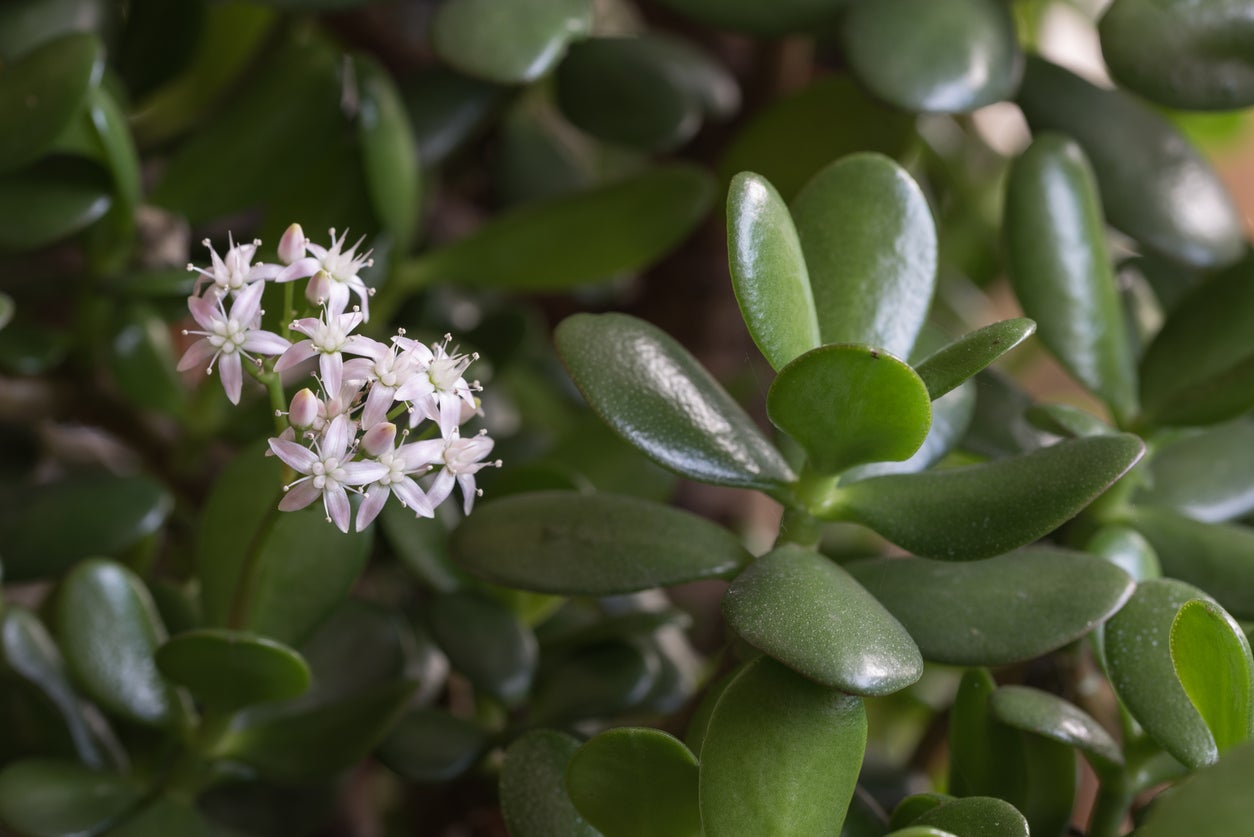Jade In The Garden: Can You Grow Jade Outdoors


Most people are familiar with jade plant's popularity all over the world as an easy-to-grow houseplant. Yet, many people are surprised to find that in warm climates growing jade plants outdoors is an excellent option. When most of us think of jade plants, we think of beautiful potted bonsai-like specimens. However, in parts of California, Arizona, and other arid warm regions, jade is a popular choice for hedge plants. Read on for more information on growing jade outside.
Outdoor Jade Plant Care
Native to South Africa, the most common variety of jade grown in the home or garden is Crassula ovata, commonly known as money tree. As container plants, they grow 2-5 feet (.5-1.5 m.) tall. Because jade plants are such slow growers, their size and shape can easily be controlled by keeping them in smaller pots and performing regular pruning and shaping. They can even be shaped easily into unique bonsai specimens. Because their stems and leaves are quick to form new roots, they are a popular choice for propagation by cuttings. They are seldom bothered by pests, need very little water, and are tolerant of poor, dry potting media and being root bound. All of this applies to outdoor jade plants as well. They are hardy in zones 10-11, but prefer hot, arid climates and can be prone to rot and other fungal problems in humid climates. Growing jade plants outside does require some patience, as they are slow growers, but in time they can top out to 6-10 feet (2-3 m.) tall. Usually, though, outdoor jade plants are kept trimmed to 2 to 4 foot (.5-1 m.) tall hedges or borders, or shaped into bonsai-like specimen or accent plants. In the right conditions, broken or fallen branches of outdoor jade plants will form new roots, allowing them to easily fill in as lush hedges and borders, and even form colonies. However, their slow growth makes them easy to maintain the desired size and shape.
Growing Jade Outside
Jade in the garden will grow best in a sandy loam soil. Quick draining soil is a must, as they will be prone to root and crown rot and other fungal problems in wet, slow-draining, compacted, or clay soils. Jade plants can grow in full sun to pretty dense shade. However, 4-6 hours of direct sunlight is ideal for outdoor plants and they’ll do best with a little shade from the intense afternoon sun. Although jade plants are succulent and can tolerate drought, their foliage can become tinged red or wrinkled and shriveled when stressed from too little water. Jade in the garden will benefit from a deep watering weekly or biweekly. They will also benefit from an annual spring fertilizer for cacti and succulents. In the right conditions, outdoor jade may form short-lived white-pink blossoms. These flowers should be deadheaded after their very short bloom period to maintain the healthy, green appearance of the plant. Mealybugs are a common pest of jade plants, so jade in the garden should be checked over regularly for these pests, as well as scale and spider mites.
Sign up for the Gardening Know How newsletter today and receive a free copy of our e-book "How to Grow Delicious Tomatoes".

Darcy is a former contributor to Gardening Know How. She is a professional landscape designer and gardening writer with experience in plant sales. An avid gardener, Darcy has a passion for sharing practical tips to help others grow.